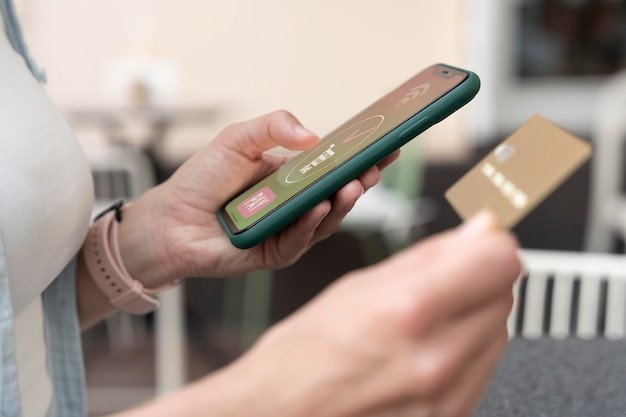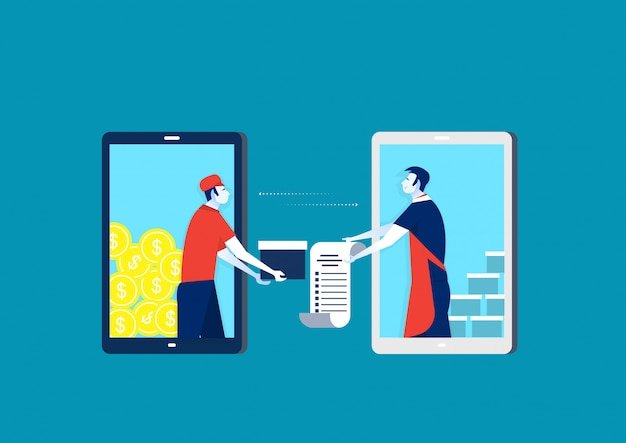Mobile shopping trends in the USA are rapidly evolving, with increased mobile commerce sales, the rise of social commerce, and the growing importance of personalized shopping experiences driving the future of online retail.
Stay ahead of the curve with insights into the latest mobile shopping trends in the USA, shaping the future of e-commerce in 2025.
The Rise of Mobile Commerce in the USA
Mobile commerce is no longer a future trend; it’s the present reality. In the USA, more and more consumers are turning to their smartphones and tablets for their shopping needs.
This shift is driven by convenience, speed, and the increasing sophistication of mobile shopping apps.
Mobile Sales Growth
The numbers speak for themselves. Mobile commerce sales continue to climb year after year, capturing a larger share of the overall e-commerce market.
Factors Driving Mobile Adoption
Several factors are contributing to this growth, including faster mobile internet speeds, improved mobile payment options, and a greater comfort level among consumers with making purchases on their mobile devices.
- 📱 Increased smartphone penetration across all demographics.
- 🚀 Faster and more reliable mobile internet connectivity (5G).
- 💳 Secure and seamless mobile payment solutions (Apple Pay, Google Pay).
- 🛍️ Enhanced mobile shopping app experiences.
The convenience of shopping anytime, anywhere, is a major draw for consumers. With just a few taps, they can browse products, compare prices, and make purchases without ever having to leave their homes.

The Impact of Social Commerce
Social media platforms have become powerful shopping destinations. Social commerce, the practice of buying and selling products directly on social media, is gaining traction in the USA.
Platforms like Instagram, Facebook, and TikTok are integrating shopping features into their apps, allowing users to discover and purchase products without ever leaving the social media environment.
The Power of Influencer Marketing
Influencer marketing plays a key role in driving social commerce sales. Consumers are more likely to purchase products recommended by influencers they trust.
Live Shopping Experiences
Live shopping events, where influencers showcase products and interact with viewers in real-time, are becoming increasingly popular.
- 🤳 Seamless integration of shopping features within social media apps.
- 🌟 Influencer marketing driving product discovery and sales.
- 🎥 Live shopping events creating engaging and interactive experiences.
- 📣 User-generated content showcasing product reviews and recommendations.
The combination of social media and e-commerce creates a powerful synergy. Brands can reach a wider audience, engage with customers on a more personal level, and drive sales through targeted advertising and influencer marketing.
Personalization and the Mobile Shopping Experience
Personalization is key to creating a compelling mobile shopping experience. Consumers expect brands to understand their preferences and offer them tailored product recommendations.
By leveraging data and analytics, retailers can personalize the mobile shopping experience to increase engagement and drive sales.
The Importance of Data
Data is the foundation of personalization. Retailers need to collect and analyze data on customer behavior, preferences, and purchase history to create personalized experiences.
Personalized Recommendations
Personalized product recommendations, based on past purchases and browsing history, can significantly increase sales.

- 🎯 Leveraging data analytics to understand customer preferences.
- 🛍️ Personalized product recommendations based on browsing history and past purchases.
- 📧 Customized marketing messages tailored to individual customer needs.
- 🎁 Exclusive offers and promotions for loyal customers.
The more personalized the shopping experience, the more likely consumers are to make a purchase. By understanding their customers’ needs and preferences, retailers can create mobile shopping experiences that are both engaging and effective.
The Role of Augmented Reality (AR) in Mobile Shopping
Augmented Reality (AR) is transforming the mobile shopping experience, allowing consumers to virtually try on clothes, visualize furniture in their homes, and explore products in a more immersive way.
AR apps are becoming increasingly sophisticated, offering consumers a more realistic and engaging shopping experience.
Virtual Try-On Experiences
AR-powered virtual try-on experiences are particularly popular in the fashion and beauty industries. Consumers can use their smartphones to virtually try on clothes, makeup, and accessories.
Product Visualization
AR can also be used to visualize products in the real world. For example, consumers can use AR apps to see how a piece of furniture would look in their homes before making a purchase.
By providing consumers with a more immersive and engaging shopping experience, AR is helping to drive mobile commerce sales and increase customer satisfaction.
| Key Trend | Brief Description |
|---|---|
| 📱 Mobile-First | Consumers prioritize shopping via smartphones and tablets. |
| 📣 Social Commerce | Social media platforms integrate direct buying and selling features. |
| 🎯 Personalization | Tailoring shopping experiences to individual customer preferences. |
| ✨ Augmented Reality | Using AR to enhance product visualization and try-on experiences. |
Conclusion
As we look ahead to 2025, the mobile shopping trends in the USA point towards a future where mobile devices are the primary shopping channel. By embracing these trends and investing in mobile-first strategies, retailers can position themselves for success in the ever-evolving e-commerce landscape.

Deixe um comentário